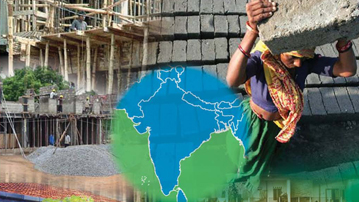South Asia’s house financing market is segmented. The market caters to upper-income groups, where supply is ample from both developers and financial institutions. Prices in this market are not affordable to the middle- and lower-income groups, however.
"Good news is that housing and housing finance services have the potential to expand to middle- and lower- income families," said said Tatiana Nenova, Senior Economist, Private and Financial Sector Development for the South Asia Region. This requires an improved land administration, strengthened legal framework for all aspects of housing, and promotion of long-term funding for mortgage lenders and developers. “Innovative traditional mortgage products and non-traditional options such as Islamic finance and Microfinace could meet demand in underserved market segments.”
Nenova listed four key dimensions of housing finance that affect the market and housing availability:
- Innovative financial instruments including for informal sector;
- Availability of long-term funding;
- Affordable mortgages for the poor and rural population; and
- Functional legal, regulatory, and information infrastructure.
First, Large-scale slums and informal settlements that exist in almost all South Asian countries underline the urgency of meeting the demand for homes. There is a shortage of more than 38 million housing units in the region. “Taking into account average household size, this translates to 212.5 million homeless people, 14% of a total population of 1.5 billion,” said Nenova.
Second, Financial markets are dominated by large banking sectors in South Asia. They have seen a gradual liberalization in recent decades, and have been exhibiting remarkable growth as a result. But financial services have been limited to basic products, and have extended in a very modest manner into housing or related insurance products.
Third, In some countries private developers discover that cheaper housing is actually capable of presenting good commercial opportunities. Faster reorientation of the building industry to lower-income construction is predicated on two conditions: developer finance and efficient land administration.
Fourth, Mortgage product innovation and customization to client needs would make housing affordable to an increasing number of families. Easing access to housing finance for low-income, rural, and informal population groups is key.
Islamic finance could meet demand in underserved market segments and microfinance has been increasingly seen as a viable option.

